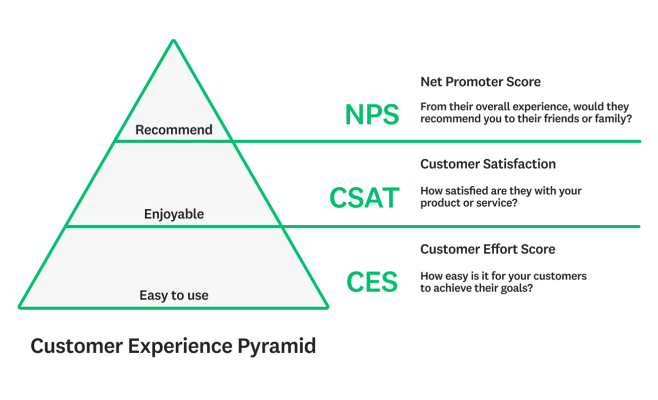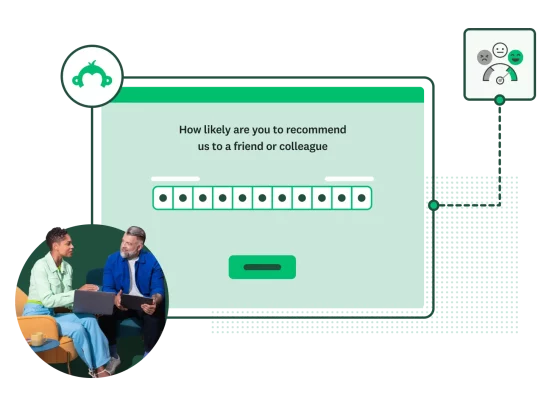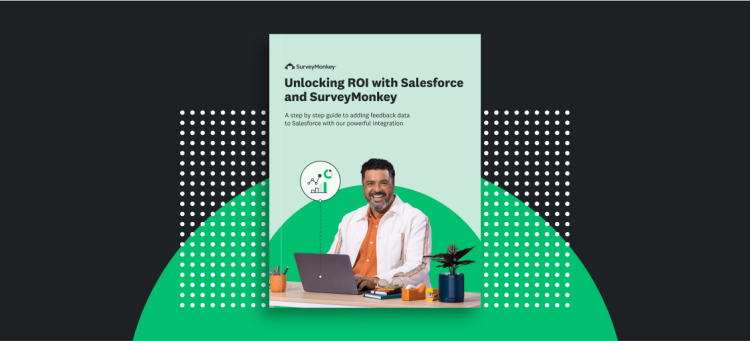Combining the power of your customer data in Salesforce with SurveyMonkey feedback capabilities unlocks numerous benefits to drive business growth and operational efficiency.
In this post, we’re going to dive into one of the top reasons why organizations use this integration: to demonstrate how customer experience (CX) ties to retention and ROI. With survey feedback linked to customer attributes and behaviors in Salesforce, teams can clearly show how an excellent customer experience impacts relational business metrics like customer lifetime value (CLV) and churn. We’ll also give examples of how to use this integration to take action to improve performance across major metrics, including CES, CSAT, and NPS.
Let’s get into it.
Tackling CX metrics at every level with survey tools for Salesforce
To understand how the SurveyMonkey Salesforce integration can help teams excel at every level of the customer experience, you can think of CX as a pyramid. This pyramid breaks down common CX metrics into a hierarchy, with each level building upon the foundation of the previous one.

As you can see, a high Net Promoter Score® (NPS) is the ultimate indicator of how much customers love a brand or company and is therefore placed at the top. While Customer Effort Score (CES) would be considered the baseline—without scoring well on it, providing good experiences at the other levels is very difficult.
Here’s a further breakdown of each level of the CX pyramid:
- CES (Customer Effort Score): At the base of the pyramid, CES measures how easy it is for customers to interact with your organization and achieve their goals. The SurveyMonkey Salesforce integration allows teams to track CES survey results alongside customer data in order to improve transactional or support processes.
For example, let's say an e-commerce company wants to provide a smooth checkout process to increase sales. They set up a post-purchase survey in SurveyMonkey, including a question about the effort taken to complete the transaction, to find out if there were any technical issues with the checkout process. The feedback data is synced back to individual customer profiles within Salesforce. The company can then analyze the feedback alongside customer data such as demographics, purchase history, or support interactions to identify patterns and trends. - CSAT (Customer Satisfaction Score): Moving up the pyramid, CSAT measures how satisfied customers are with specific interactions or overall brand experience. Integrating surveys with Salesforce, teams can trigger surveys at key customer touch points, from onboarding to renewal.
For example, teams can set up automated alerts in Salesforce to notify support managers when a customer provides a low CSAT score, enabling them to proactively reach out and address the customer's concerns. Or if a significant number of customers report low satisfaction scores related to long wait times, teams can use this insight to improve their support staffing.
Related: The ultimate guide to Customer Satisfaction Score - NPS (Net Promoter Score): At the top of the pyramid, NPS measures customer loyalty and the likelihood to recommend. By linking NPS surveys with customer profiles in Salesforce, teams can identify promoters, passives, and detractors, and develop targeted strategies to nurture loyalty, address concerns, and turn passives and detractors into promoters.
For example, a company can track customer sentiment with always-on surveys at key milestones, such as at the end of a free trial or after a certain period of product usage. Integrating this NPS survey data with Salesforce, the company can identify opportunities to intervene and improve CX. They can also use Salesforce to trigger personalized follow-up actions based on NPS responses, such as sending a special offer to passives to help convert them into promoters, or channeling detractor feedback to a customer success team member for immediate resolution.

As we've seen, the SurveyMonkey Salesforce integration enables companies to excel at every level of the CX pyramid, from improving CES to driving higher NPS. By automating survey distribution, linking feedback data to customer profiles, and triggering personalized follow-up actions, organizations can optimize their CX efforts and demonstrate the tangible impact on business outcomes.
If you're ready to take CX to the next level, we recommend checking out our comprehensive SurveyMonkey Salesforce integration guide. This guide outlines the top ways our customers leverage the integration and, if you've already begun using Salesforce with SurveyMonkey, we provide helpful recommendations on how to further utilize its features.
Download our guide, Unlocking ROI with Salesforce and SurveyMonkey, to get the most out of customer feedback with these two powerful platforms.




